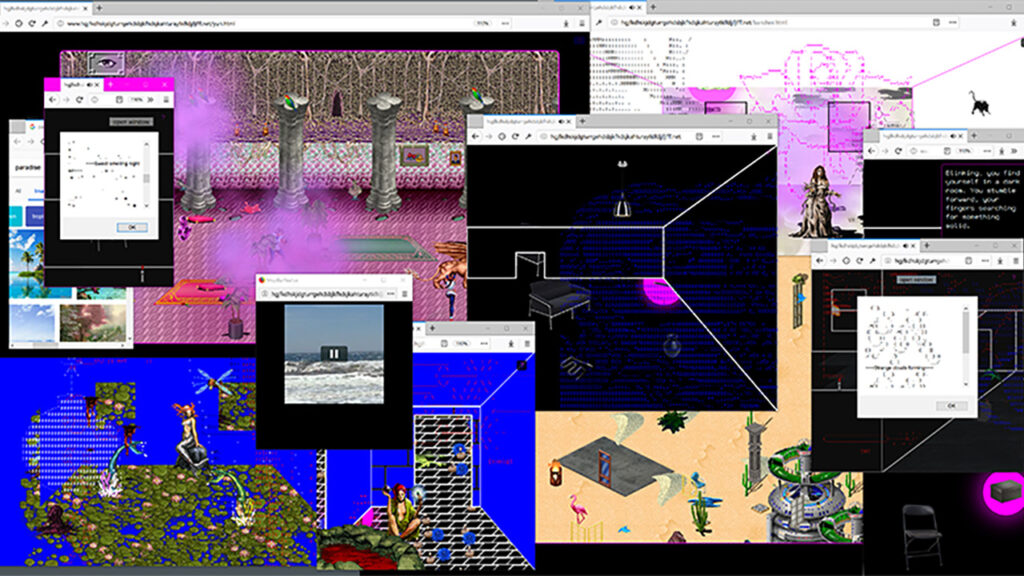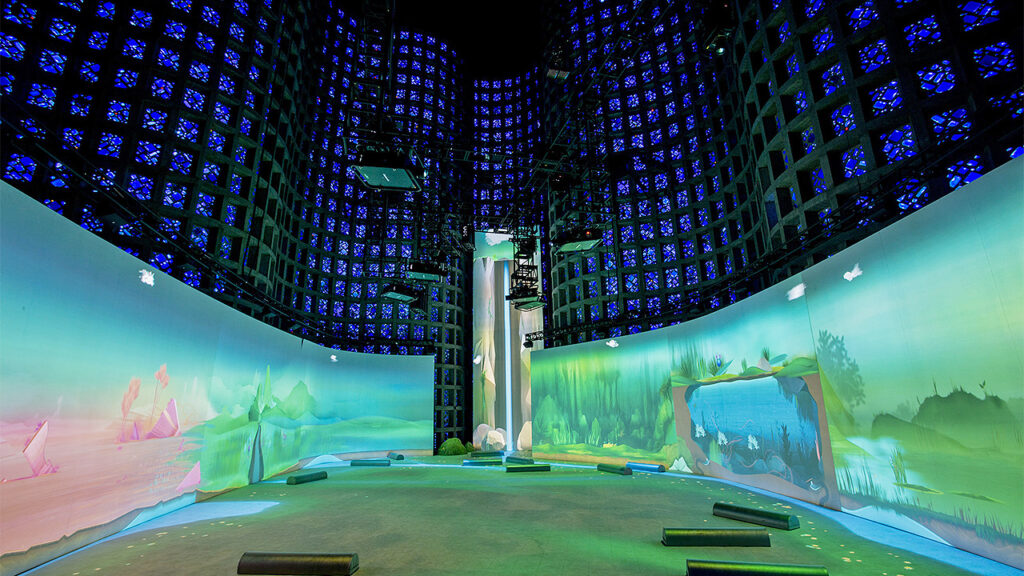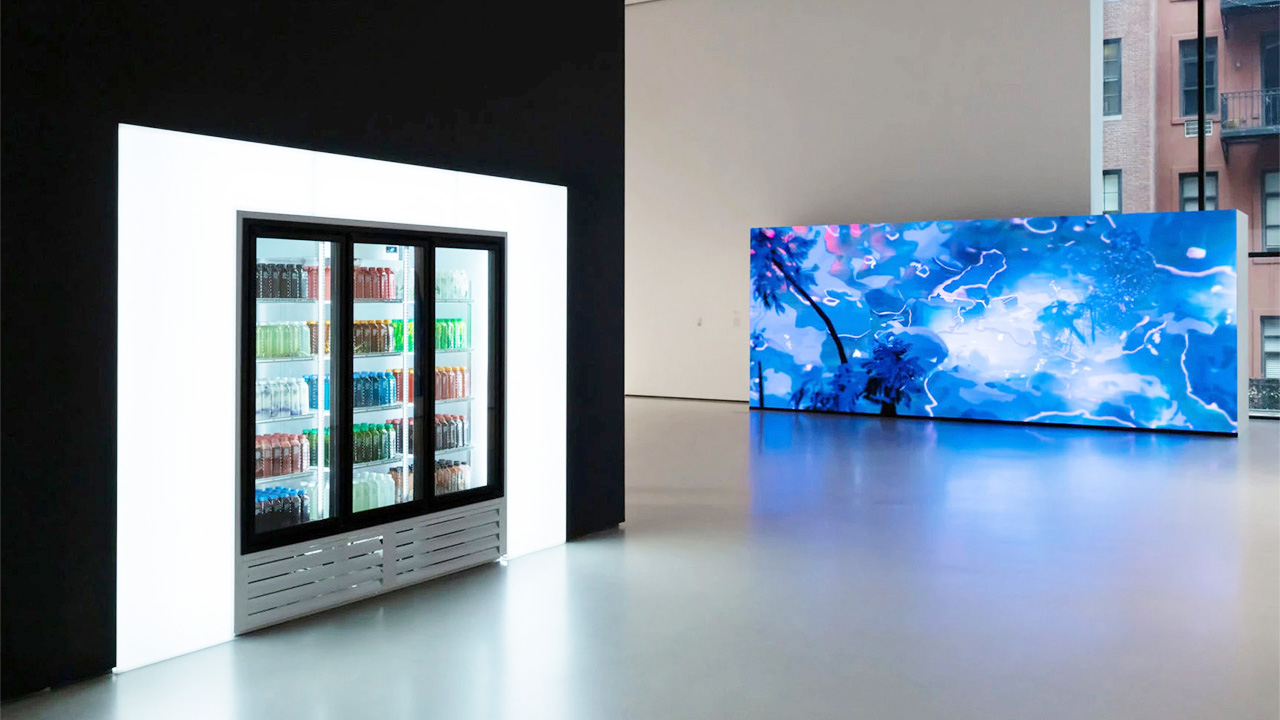In the past half-century, digital technologies have evolved from fringe creative mediums to possibility-rich tools for contemporary artists. Computer art pioneers like Vera Molnár and Frieder Nake may have only had plotters and primitive programming languages to hand, but working artists today have access to technologies that run the gamut from mixed reality to machine learning to mobile apps with which to aid in their art-making, storytelling, and experimentation.
So teeming is today’s digital art space that the National Endowment for the Arts (NEA), in 2019, embarked on a field scan for a comprehensive view of how artists are using digital technologies and crucially, how the existing cultural ecosystem can enhance and support these practices. Its newly released report, Tech as Art: Supporting Artists Who Use Technology as a Creative Medium, found the sector swiftly expanding in volume and economic value, in step with the growing adoption of digital devices, the ascendency of digital platforms, and most recently, a pandemic.
Unhappily, though, this vast expansion has not been matched in institutional or funding support. The digital artists surveyed, whose projects often require long development periods, and access to the latest equipment and training, describe gaps in resources, limited presentation opportunities, and lack of funding as barriers to building viable and sustainable practices. On the part of arts organizations, infrastructural complexities and technical shortfall often hamper their accommodation of digital pieces and understanding of how audiences interface with such works.
All of which spells a major missed opportunity for both parties. “Particularly in the COVID-19 environment,” as the report notes, “artists who work with technology have the experience and orientation to reinvent digitally and to envision bold futures for cultural participation.” To that end, it details ways in which museums can more proactively work with digital artists to foster connections, communities, and a more robust arts ecosystem. Here are three key recommendations.
Expand technical expertise and capacity

Programs spearheaded by partnerships such as New Museum’s and Rhizome’s have provided space for digital art in traditional institutional settings. Image: Cassie McQuarter, Black Room, 2018. A 2018 Rhizome Commission, New Museum.
While new media institutions and dedicated digital art platforms such as ARTECHOUSE have offered tech-focused artists presentation opportunities, traditional museums remain, well, traditional in their approach to digital work. The reason isn’t limited to a lack of curatorial interest or knowledge, but as well, technical unpreparedness. “Institutions unaccustomed to working with technologies,” reads the report, “may be ill-equipped to properly present and install works — a deficiency that can result in unsatisfactory experiences for audiences and visitors.”
For museums hoping to invest in the space, the NEA suggests boosting the technical expertise of their program staff through professional development opportunities, and consulting with practitioners who are knowledgeable of the field. These collaborations won’t just aid in the curation and interpretation of tech-based works, but might offer institutions insight into how to best engage viewers. Partnerships with technology companies would further help to provide cost-effective know-how when it comes to installation or presentations of digital work. Additionally, allowing longer buildout timelines and specialized assistance for tech-centered exhibitions will ensure both artists and museum staff can realistically assess needs, troubleshoot, and meet expectations.
Outreach, outreach, outreach
When it comes to the digital arts, the NEA’s report notes that “more work is needed to develop a foothold in arts institutions which play a critical role in reinforcing canons, setting trends, and elevating artists and artistic practices to a respected status.” Just as tech-centered creators are endeavoring to do that work — tapping grants, incubators, or academic programs — cultural institutions need to meet them halfway. That means reviewing and recalibrating their existing initiatives, calls-for-work, open submissions, or grant applications to welcome and include emergent forms of art. It also means being proactive in reaching out to, supporting, and embracing communities and collectives that have been foundational for digital art, and where collaborative opportunities might be nurtured.
Creative placemaking

A network of European festivals and repeated commissions introduced a global audience to Design I/O’s work — without which, the studio admits, it “wouldn’t be here today.” Image: Connected Worlds at the New York Hall of Science, Design I/O
Finally, there’s the bottom line. A lack of financing and resources often plagues digital art practices, to which cultural institutions can respond with creative placemaking — launching initiatives and strategies for the commissioning of digital projects. Besides compensating and accommodating tech-focused workers, these programs (see LACMA’s Art + Technology Lab) aid in a project’s development by connecting artists to necessary expertise or equipment, and facilitating the prototyping, installation, and maintenance of their work. Funding for these initiatives, the report suggests, can be sought from public (the National Science Foundation, for example) or private sources (corporate sponsorships, digital inclusion funds).
Such creative placemaking, the report adds, “can introduce audiences or residents to contemporary arts approaches to technology.” In short, it’ll give digital makers a massive leg-up. Take it from interactive studio Design I/O — best known for its Connected Worlds installation at the New York Hall of Science — which managed to scale up its practice thanks to repeated commissions from Amsterdam’s Cinekid and Toronto’s digiPlaySpace. “The bridge between when someone decides they’re going to embark on a career in this direction and getting to that point of being established — that’s an incredibly hard thing to overcome, but it doesn’t take a lot,” the studio stated. “It takes having a platform and a little bit of funding for one or two compelling works and good exposure.”



